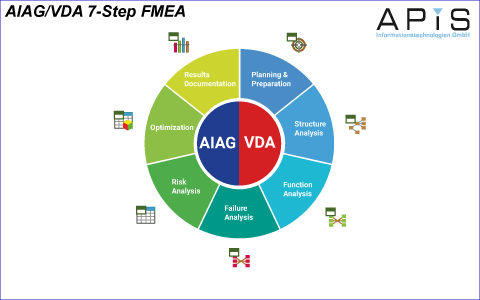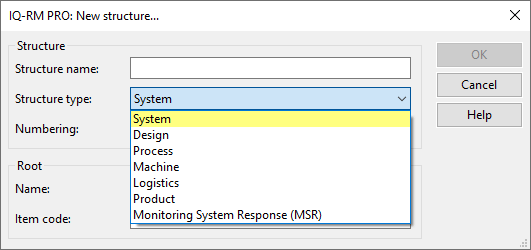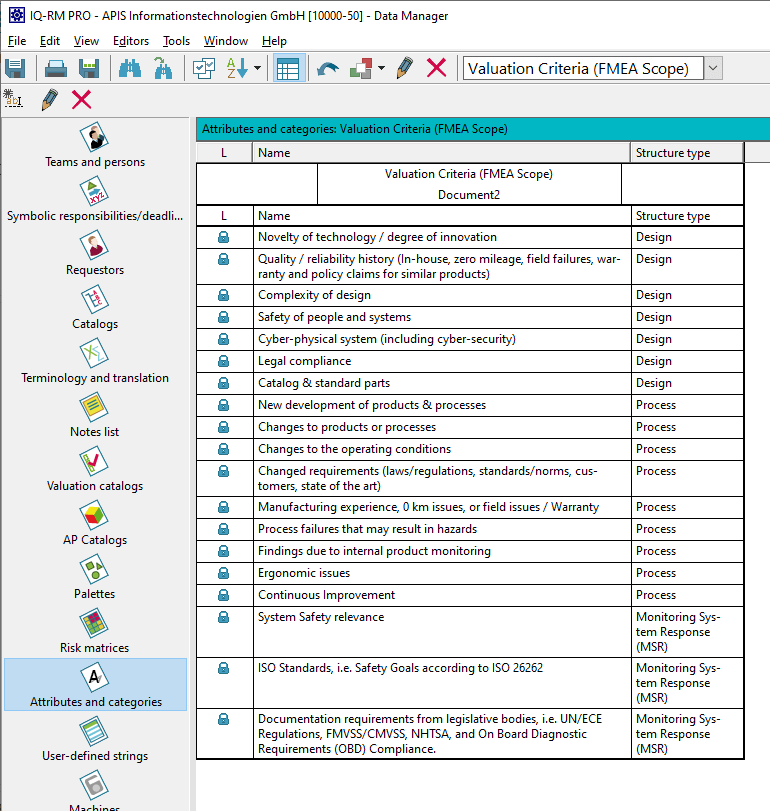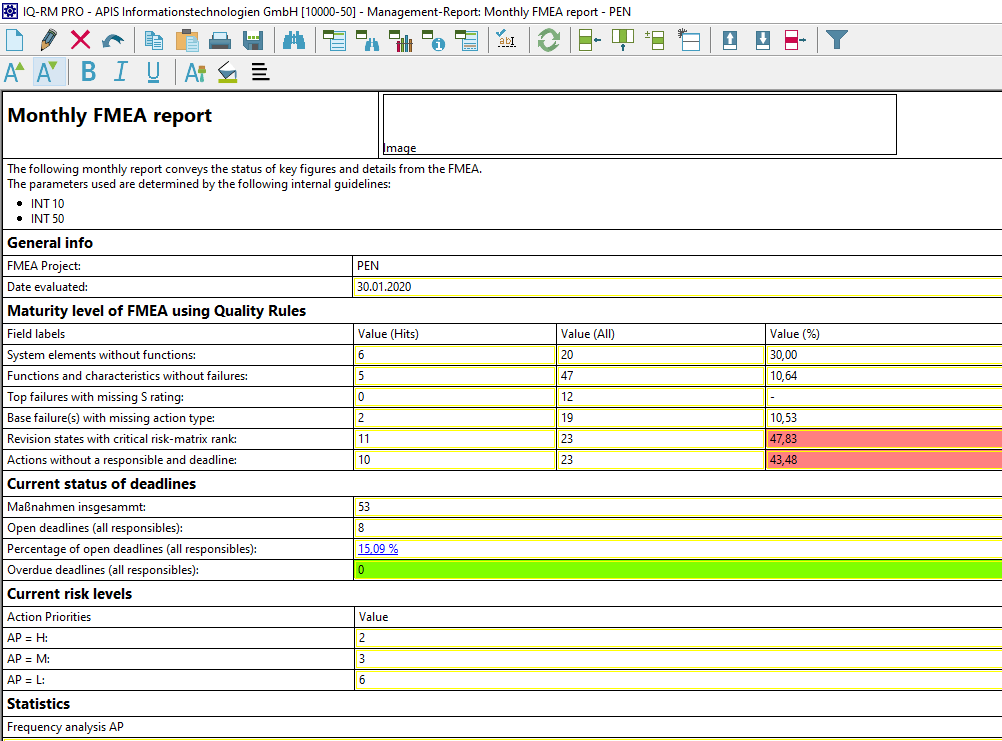
AIAG VDA 7-Step FMEA
The new 7-step FMEA was introduced in 2019 as a collaboration between AIAG and VDA. This alignment brings together many aspects of risk reduction for products and processes. APIS Informationstechnologien GmbH has been developing FMEA software since 1988. Since our first product was released in 1992, we have focused on a holistic approach, whereby a common dataset can be viewed in different editors depending on what the user wants to analyse and edit. This empowers the user to concentrate on certain aspects of an FMEA in detail while retaining a comprehensive overview of the entire project.
The original 5-step process for FMEA development has been established for many years and they remain as steps 2-6 of the updated 7-step process. To see more on the methodology and purpose of these steps, click here.
We’ll focus on the two new steps introduced with the 2019 AIAG/VDA Alignment which bookend the previous process: 1. Planning & preparation and 7. Results documentation. As an introduction, we invite you to take a look at our IQ-Software Version 7.0, introduced in July of 2019 to conform to all AIAG/VDA 2019 Alignment requirements.
1. Planning and preparation
In order to document which elements of the product or process receive FMEA attention and why, APIS introduced a new editor: “FMEA Scope Analysis”. Here, you can enter data relevant to your project and specify which elements require/do not require further analysis. As the IQ-Software connects information across all editors, it is possible to connect data from existing IQ-Software files, e.g. the Structure Editor where you may have already created your elements into a structure. The same applies to other editors like the Block Diagram Editor, where you can import graphics such as process flows or boundary diagrams which further help with understanding the project at hand.

There are several (configurable) columns to identify which element(s) need to be analysed further. One major part of this process is the “Valuation criteria (FMEA Scope)” section. There are many aspects that can be considered here, many of which depend on e.g. your customer requirements. According to the AIAG/VDA Alignment, there are three main types of FMEA: Design FMEAs, Process FMEAs and FMEA-MSR. Depending on which type of FMEA you are performing, these valuation criteria can differ. APIS IQ-Software fully supports the following FMEAs:

- System
- Design
- Process
- Machine
- Logistics
- Product
- Monitoring System Response (MSR)
You may notice that when you open the Scope Analysis Editor, the valuation criteria section differs depending on which type of FMEA you have selected as the structure type. As standard, APIS has set certain criteria depending on the type of FMEA being performed. These are recommendations and can be adjusted to your requirements. Here is an example of the default criteria for FMEA-MSR:

- System Safety relevance
- ISO Standards
- Documentation requirements from legislative bodies
In comparison, a Process FMEA or PFMEA has the following default columns:

- Changed requirements
- Manufacturing experience, 0 km issues, or field issues / Warranty
- Ergonomic issues
- Process failures that may result in hazards
- Changes to products or process
- Continuous improvement
- Changes to the operating conditions
- Findings due to internal product monitoring
- New development of products & processes
In order to choose the correct valuation criteria for your project, go to the main menu and select “Administration | Attributes and categories” and then select “Valuation Criteria (FMEA Scope)” from the drop-down:
It is possible to add new criteria to this list by right-clicking and selecting “Direct add” and then entering the name. Then simply allocate which structure type it belongs to e.g. Design. 
Step 1 of the new FMEA process is a time to ask questions relevant to the project, to plan and identify what should be included/excluded and determine how the FMEA should proceed into the second step “Structure analysis”. APIS IQ-Software Version 7.0 was designed to aid the user in completing this stage with ease and with the intention of creating robust FMEAs.
7. Results and documentation
Once the optimization process has been completed, it is important to communicate the results of the analysis to relay how the FMEA has been performed and how risks have been identified and reduced through engineering activity. The APIS IQ-Software has provided several ways to do this for many years. This includes using the Web Publisher (File | Web Publisher) to create Web-Browser-ready HTML files of selected analyses or the entire FMEA, as well as exporting data in the same manner to Excel. Forms such as Control Plans and FMEA cover sheets are easily created using existing data from the analysis with few clicks.
The 2019 Alignment requires an “FMEA Report” to be produced for step 7. Accordingly, APIS has introduced a new IQ-form: the Management Report (Tools | Forms/Reports | Management Report). 
This versatile IQ-feature enables the user to meet requirements internally or externally for customers who require certain data to be reported to them about the FMEA project. Furthermore, to comply with AIAG/VDA Alignment standards, all information required from step 7, parts A-F of the handbook can easily be entered here. The report, as a template, can be saved for future reuse of various .fme files and updated at any time. For a deeper dive in the Management Report, see this video.


